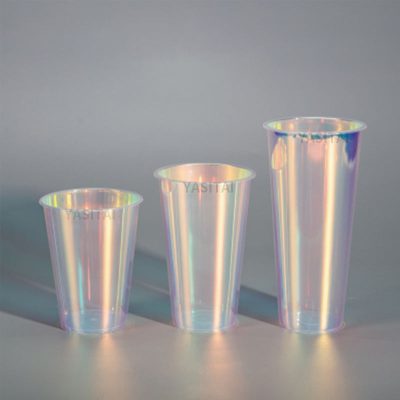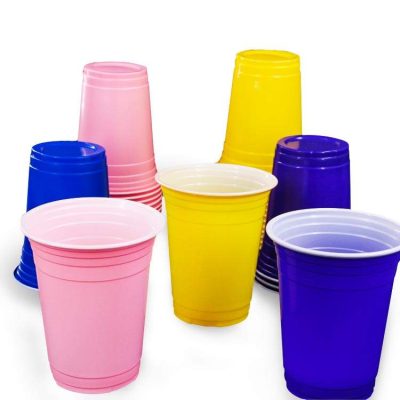Stackable plastic cups – save space and easy storage
Features:
- Material:
- Use lightweight yet durable materials like polypropylene (PP) or polystyrene (PS) for sturdiness and ease of handling.
- Consider options for recycled materials or eco-friendly plastics to appeal to environmentally conscious consumers.
- Stackability:
- Design cups with a tapered shape or nesting rims that allow them to securely stack on top of each other without sticking together.
- Ensure stable stacking to prevent tipping or toppling when stored in stacks.
- Sizes and Capacities:
- Offer a range of sizes from small (e.g., 8 oz) to large (e.g., 20 oz) to accommodate different drink volumes and preferences.
- Ensure uniformity in rim diameter across different sizes for stable stacking.
- Rim Design:
- Design the rims to be smooth and reinforced to facilitate easy separation and stacking.
- Durability:
- Ensure the cups are durable enough to withstand repeated stacking and handling without cracking or deforming.
- Consider adding reinforcement at stress points to enhance longevity.
- Space-Saving Design:
- Optimize the shape and dimensions to maximize storage efficiency in cabinets, shelves, or storage racks.
- Offer options with straight sides or tapered designs to minimize wasted space between stacked cups.
- Safety and Compliance:
- Ensure the cups are made from food-safe materials and comply with relevant safety standards, such as FDA approval for food contact.
- Customization Options:
- Provide options for custom printing or branding, allowing businesses to personalize cups for promotional purposes or events.
Considerations:
- Cost-Effectiveness:
- Balance durability and performance with cost-effectiveness to ensure the cups are suitable for both commercial and personal use.
- Environmental Impact:
- Consider the environmental impact of the materials used. Offer options using recycled materials or biodegradable plastics if feasible.
- Consumer Education:
- Provide information on proper disposal or recycling to promote environmentally responsible behavior among consumers.
- Quality Control:
- Maintain high standards of production and quality control to ensure consistency in performance and safety.
- Market Demand:
- Conduct market research to understand the demand for stackable plastic cups and tailor features accordingly to meet consumer needs.
Example Use Cases:
- Restaurants and Bars: Ideal for efficiently storing and serving beverages in busy food service environments.
- Household Use: Convenient for everyday use in homes, dormitories, or offices where space-saving solutions are essential.
- Events and Catering: Useful for large gatherings, parties, and events where efficient storage and serving are crucial.
By focusing on these features and considerations, stackable plastic cups can provide practical and space-saving solutions for various applications, offering durability, ease of storage, and convenience for both businesses and consumers alike.







